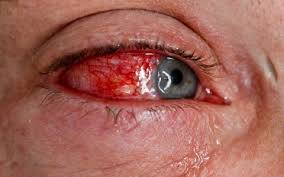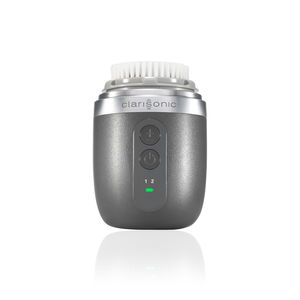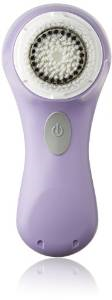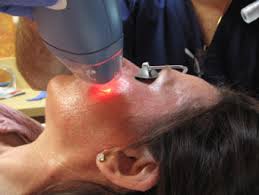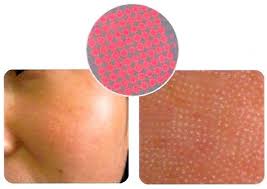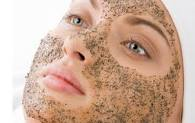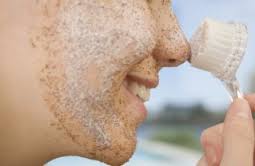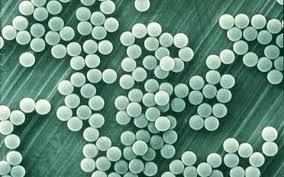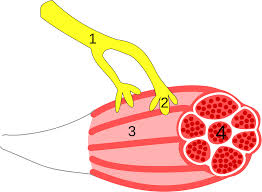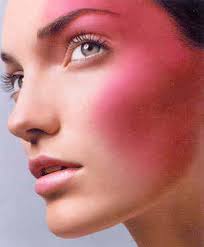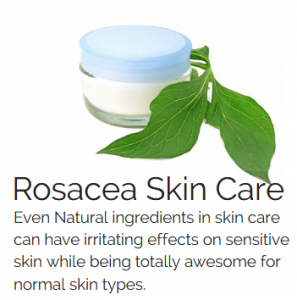 Article Objective – Rosacea Skin Care: To discuss the importance of avoiding skin care irritants commonly found in the new wave of facial cleansers. Many of these irritants are unknown to rosacea sufferers as they are literally impossible to follow with the rash of new products containing exotic ingredients being produced and shelved every month. We also included several “all-natural” ingredients in our list to avoid to emphasize that just because an ingredient is all-natural, does not mean it is irritant free — they can be strong irritants and cause allergic responses and severe dermatitis. Lastly, we will highlight the fact that many facial cleansers labelled “safe for sensitive skin” are usually not safe for ultra-sensitive skin and could actually irritate rosacea.
Article Objective – Rosacea Skin Care: To discuss the importance of avoiding skin care irritants commonly found in the new wave of facial cleansers. Many of these irritants are unknown to rosacea sufferers as they are literally impossible to follow with the rash of new products containing exotic ingredients being produced and shelved every month. We also included several “all-natural” ingredients in our list to avoid to emphasize that just because an ingredient is all-natural, does not mean it is irritant free — they can be strong irritants and cause allergic responses and severe dermatitis. Lastly, we will highlight the fact that many facial cleansers labelled “safe for sensitive skin” are usually not safe for ultra-sensitive skin and could actually irritate rosacea.
Why Ingredients In Your Facial Cleanser May Have You Seeing Red.
Topical skin care products such as facial cleansers, moisturizers, sunscreens, anti-acne products, anti-aging products and general cosmetics cause facial irritation, redness and flushing in many rosacea sufferers. Rosacea sufferers should be well-educated on skin care-induced irritation because it is one of the most damaging to rosacea skin and one of the most deceptive.
Skin care-induced irritation and flushing can be quite deceptiave because it does not always appear immediately after using the skin care product, especially facial cleansers — irritation may take hours or days after use of the cleanser, making it hard to identify. Furthermore, the facial cleanser may only cause mild irritation and flushing (the notorious ‘healthy glow’) and be totally overlooked by the user.
The National Rosacea Society has a thorough list of known rosacea irritants on their home page, but in the last few years, especially 2014, many new ingredients with high irritant potential have been added to cleansers and the average rosacea sufferer may have no idea that these new ingredients may be the source of their rosacea flares. Let’s take a look at 10 ingredients recently added to facial cleansers and why they have high irritant potential.
10 Skin Care Ingredients That May Irritate Rosacea and Sensitive Skin Types
- Charcoal PowderCharcoal powder is now being incorporated into many top name facial cleansers such as Biore and Garnier. It looks to be the most celebrated new ingredient of 2014. It is mainly being used to clear pores of excess sebum and remove small white heads and black heads. It’s actions are similar to clays such as Benotite and Kaolin clay, but has the novelty factor. This ingredient does work. Within one wash many see clearer pores and better overall skin clarity… and a healthy light red glow. The problem for rosacea sufferers is that charcoal powder cannot discern between dead skin cells in pores and facial skin so it is a harsh exfoliator on any skin that it’s applied to — hence the irritation and the redness. If rosacea sufferers want to test this product out try it once or twice a week at the most and steer clear of the Charcoal Powder masks and scrubs.Irritation Factor: 7(on a scale of 1 to 10)
- Grapefruit ExtractGrapefruit extract has recently been added to many facial cleansers because it is an excellent skin exfoliant and has a pleasant natural fragrance. This ingredient reduces oil secretion and makes skin very smooth to the touch. However, the removal of skin cells (exfoliation) brings blood vessels closer to the surface and often results in increase redness and irritant dermatitis. Cumulative use may result in permanent changes to the outer epidermal barrier and worsen many aspects of rosacea.Irritation Factor: 8
- Helichrysum Italicum ExtractHelichrysum Italicum Extract is a novel natural antimicrobial agent that is now popular in many anti-acne facial cleansers such as Clearasil, Oxy and Biore. This ingredient has moderate irritant actions though that are well documented. To make matters worse, antimicrobial agents don’t help rosacea skin at all and this ingredient is usually added in combination with the ingredient listed below, Cistus Monspeliensis Extract, which greatly increases the overall irritation potential.Irritation Factor: 5
Irritation Factor with Cistus Monspeliensis Extract: 8 - Cistus Monspeliensis ExtractCistus Monspeliensis Extract is a novel antibacterial and antifungal that clears skin affected by bacterial and fungal overgrowth. However, it is a moderate irritant on sensitive rosacea skin. You will usually see this ingredient and Helichrysum listed somewhere in the middle of the ingredient list as they need to be added at fairly high concentrations to be effective. Once again, when these two are added together, it is a cocktail that will irritate many rosacea sufferers. Be cautious when trying out these new products because, once again, rosacea is not a disorder of bacteria or fungi.Irritation Factor: 5
Irritation Factor with Helichrysum Italicum Extract: 8 - PhenoxyethanolPhenoxyethanol has become a very popular ingredient because it is able to replace Parabens as a safe preservative at low concentrations. This is excellent news for rosacea sufferers who are sensitive to many preservatives, especially the Paraben family. However, skin care companies learned that at high concentrations Phenoxyethanol is an excellent facial cleanser because it dissolves sebum, fat, and dead skin cells in facial pores — within 10 to 20 seconds of application. The main problem is that this is a strong irritant when used at high concentrations because it is an alcohol (which the National Rosacea Society notes is one of the worst irritants in skin care products). Please be cautious if Phenoxyethanol is used as anything other than a preservative (ie it will usually be listed as the last ingredient). This is a sneaky irritant because most facial cleansers using this as a cleansing agent actually state “alcohol free” on the bottle label because it is not a drying alcohol — but make no mistake, it is a harsh alcohol — and it’s right in the name, “Ethanol”.Irritation Factor: 9
- White Willow (Salix Alba)White Willow or Salix Alba can be found in almost all nature-based facial cleansers used for acne. This is the natural form of salicylic acid, a known rosacea irritant. The main problem with Salix Alba is that it is also a strong irritant — just because it’s “all natural” does not mean it’s safe or non-irritating. It is moderately irritating, especially at the high concentrations that most cleansers incorporate it into their product. This may be a better option then the beta-hydroxyl acid, salicylic acid, but if you are going to test out an all-natural product with this ingredient, start slowly and use it sparingly the first month to see if your skin reacts to cumulative insults by this ingredient.Irritation Factor: 4
- Roman Chamomile (Anthemis Nobilis) vs Chamomile Recutita (Matricaia)Topical chamomile is listed as one of the best all-natural anti-irritant and skin calming agents for rosacea in almost any publication you read. They are half right on their statements and conclusion. One must find out if they are using Roman Chamomile in the facial cleanser or Chamomile Recutita as the former comes from the ragweed family and often causes allergic skin reactions, especially in rosacea-sensitive skin.If you are looking for the best form of chamomile, you should look for Chamomile Recutita or Matricaia as this form rarely causes irritation or allergic reactions and over a dozen clinical studies demonstrates that it does indeed calm red rosacea skin and acts as an anti-irritant in a high percentage of rosacea sufferers. Steer clear of the Roman Chamomile, especially if you have allergies.
Irritation Factor: 6
- Sweet Orange ExtractSweet orange essential oil is often used in cosmetics as a fragrance, adding a fruity citrus scent to your cleanser. This oil comes from the fruit of the orange tree Citrus sinensis or Citrus aurantium dulcis, with varieties including Valencia, blood and navel oranges. The oil is extracted from the fruit’s peel either through the process of cold pressing or distillation, and the result is oil that smells light and sweet, just like the fresh fruit. Because of its fresh scent, limonene is included in many cosmetics, skin cleansers and other kinds of cleaning products, but it also can cause skin irritation, especially in those with sensitive skin because it acts as a moderate exfoliant like Grapefruit Extract. Read your product labels carefully because skin care companies are adding this extract to many products because of its alluring natural fragrance and its secondary action as a skin exfoliant.Irritation Potential: 5
- Mentha Arvensis Leaf Oil (Peppermint Leaf Oil)Mentha Arvensis Leaf Oil is now used in many facial cleansers because of the wonderful natural fragrance and its ability to cool and calm skin for a short time. However, this ingredient is a master in disguise because these types of natural cooling agents almost always cause rebound flushing because the “cooling sensory nerves” are connected to the facial blood vessels and constriction causes a rebound redness and burning within several hours after use. It dumbfounds most rosacea sufferers because the cleanser feels so good upon application. But this has flown under the radar in 2014 as some of the most well-known irritants such as menthol, eucalyptus oil and camphor are avoided by rosacea sufferers like the plague. Add this ingredient right into the mix and do not use any facial cleansers with this ingredient.Irritation Potential: 9
- Spearmint OilJust like Peppermint Leaf Oil, Spearmint Oil is now a favorite addition to many cleansers and has the same side effects. Please do not use any facial cleansers with Spearmint Oil — it’s not even worth a try as this will cause problems and irritate rosacea skin within a few uses.Irritation Potential: 9
Help Us Help Others – Did it, irritate rosacea, skin care experience.
- Have you had flare up or persistent redness and now see one or more of the 10 skin care ingredients to avoid if you have rosacea on the label of the skin care products your using?
- If so, what facial product did you use that irritated your rosacea?
- Which “irritant ingredients” mentioned above were in the product?
The post 10 Skin Care Ingredients That Irritate Rosacea Skin You Should Avoid appeared first on Rosadyn.

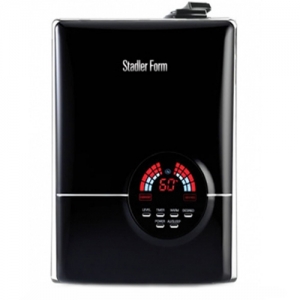



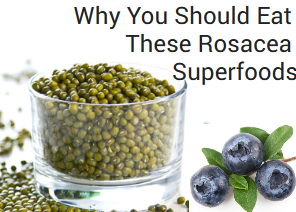
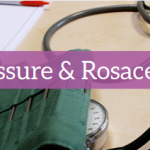

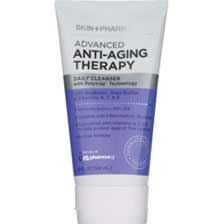

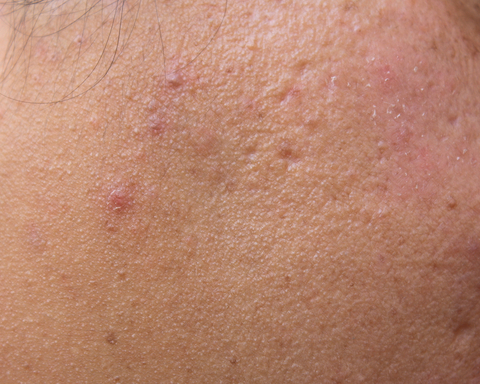
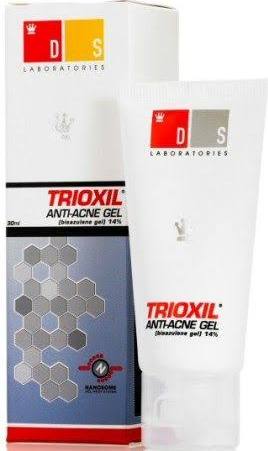

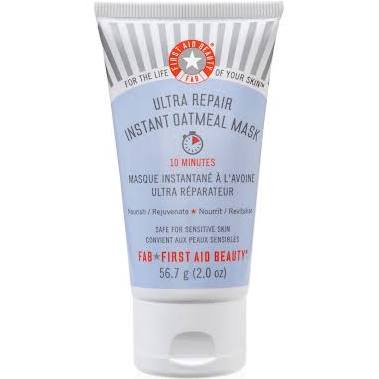
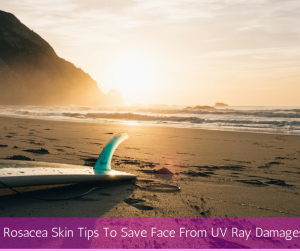

 effective that it’s being used to help treat vascular dysfunction in cardiovascular disease, hypertension, diabetes and inflammatory skin disorders.
effective that it’s being used to help treat vascular dysfunction in cardiovascular disease, hypertension, diabetes and inflammatory skin disorders.

